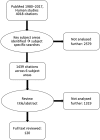Long-term adverse effects of paracetamol - a review
- PMID: 29863746
- PMCID: PMC6138494
- DOI: 10.1111/bcp.13656
Long-term adverse effects of paracetamol - a review
Abstract
Paracetamol (acetaminophen) is the most commonly used drug in the world, with a long record of use in acute and chronic pain. In recent years, the benefits of paracetamol use in chronic conditions has been questioned, notably in the areas of osteoarthritis and lower back pain. Over the same period, concerns over the long-term adverse effects of paracetamol use have increased, initially in the field of hypertension, but more recently in other areas as well. The evidence base for the adverse effects of chronic paracetamol use consists of many cohort and observational studies, with few randomized controlled trials, many of which contradict each other, so these studies must be interpreted with caution. Nevertheless, there are some areas where the evidence for harm is more robust, and if a clinician is starting paracetamol with the expectation of chronic use it might be advisable to discuss these side effects with patients beforehand. In particular, an increased risk of gastrointestinal bleeding and a small (~4 mmHg) increase in systolic blood pressure are adverse effects for which the evidence is particularly strong, and which show a degree of dose dependence. As our estimation of the benefits decreases, an accurate assessment of the harms is ever more important. The present review summarizes the current evidence on the harms associated with chronic paracetamol use, focusing on cardiovascular disease, asthma and renal injury, and the effects of in utero exposure.
Keywords: acetaminophen; adverse effects; asthma; gastrointestinal bleeding; hypertension; kidney disease.
© 2018 The British Pharmacological Society.
References
-
- Morse HN. Ueber eine neue darstellungsmethode der acetylamidophenole. Ber Dtsch Chem Ges 1878; 11: 232–233.
-
- Jefferies S, Saxena M, Young P. Paracetamol in critical illness: a review. Crit Care Resusc 2012; 14: 74–80. - PubMed
-
- Von Mering J. Beitrage zur Kenntniss der antipyretica. Ther Monatsch 1893; 7: 577–587.
-
- Antoni S, Soerjomataram I, Moore S, Ferlay J, Sitas F, Smith DP, et al The ban on phenacetin is associated with changes in the incidence trends of upper‐urinary tract cancers in Australia. Aust N Z J Public Health 2014; 38: 455–458. - PubMed
Publication types
MeSH terms
Substances
Grants and funding
LinkOut - more resources
Full Text Sources
Other Literature Sources
Medical
Research Materials


